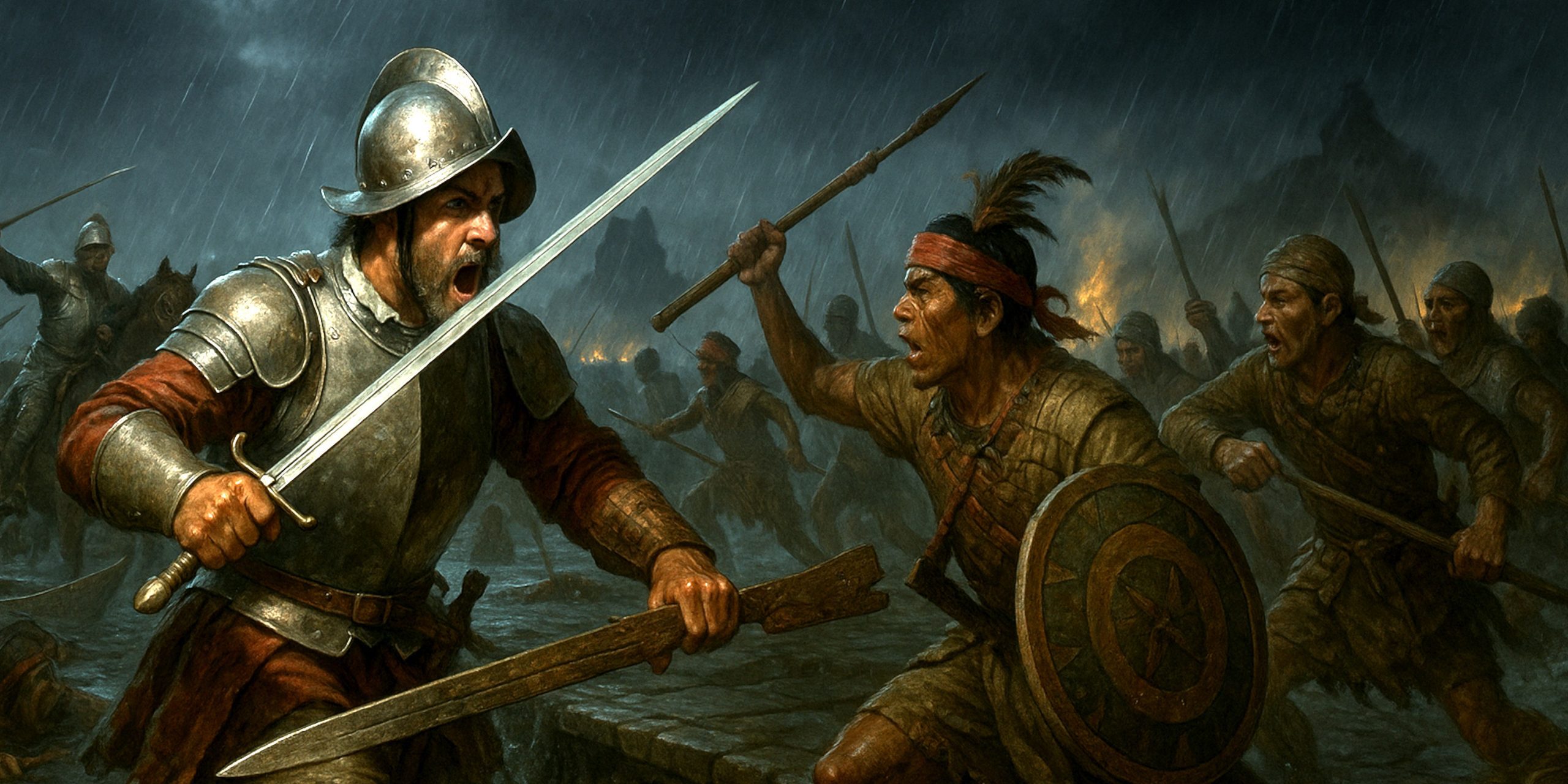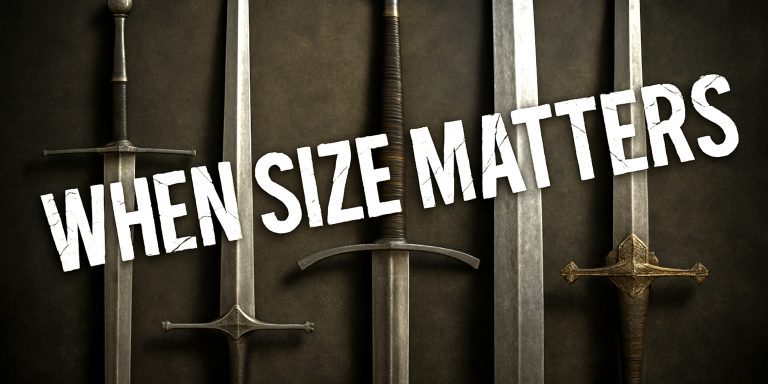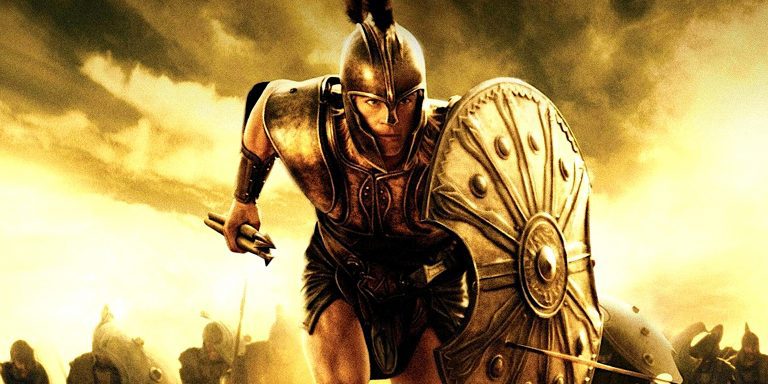
A historian cannot help but feel a slight shiver when writing about this episode, partly because the sources drip with grief and fury, and partly because it shows how quickly imperial confidence can crack when reality refuses to cooperate. The night of 30 June 1520 has been polished into legend, but the truth beneath it is raw, chaotic and oddly human.
The Noche Triste, often translated as the Night of Sorrows, marked the desperate retreat of Hernán Cortés and his forces from Tenochtitlan. For months the Spaniards had played a dangerous game of politics, intimidation and opportunism. By midsummer the city was grinding them down. Food was scarce, tempers were frayed, and a population that had once treated these newcomers with watchful curiosity had turned into a hornet swarm.
What followed was not a grand set piece. It was a cramped, midnight struggle across narrow causeways, with rain-slick stone, collapsing bridges and warriors attacking from canoe and rooftop. If conquest has its triumphs, it certainly has its humiliations, and this night sits firmly in the latter camp.
Forces
This is where the numbers become slippery. Chroniclers wrote with pride or embarrassment, often both, but the broad outlines can be sketched.
Spanish and allied forces
A mixed army that looked confident on parchment but suffered from tight quarters and failing morale by late June.
| Component | Estimate | Notes |
|---|---|---|
| Spanish infantry | c. 1,000 | Mostly foot soldiers, with a small number of veteran swordsmen. |
| Spanish cavalry | c. 80 | A severe liability on narrow causeways. |
| Crossbowmen and arquebusiers | c. 80 to 100 | Useful in open ground, dangerously limited in the dark and chaos. |
| Tlaxcalan and other Indigenous allies | c. 6,000 to 8,000 | Crucial allies but often the first to bear the brunt of Aztec counterattacks. |
Mexica forces
Not a single army but the entire military apparatus of Tenochtitlan, responding rapidly and with discipline.
| Component | Estimate | Notes |
|---|---|---|
| Professional warriors | Several thousand | Jaguar and Eagle warriors equipped for close combat. |
| Militia and city levies | Thousands more | Mobilised from surrounding districts. |
| Canoe units | Hundreds | Dominated the lake around the causeways. |
Leaders
Spanish leadership
- Hernán Cortés, commander, a man who often relied on audacity and normally got away with it. This time he did not.
- Pedro de Alvarado, lieutenant, infamous for provoking the uprising that forced this retreat.
- Gonzalo de Sandoval, cavalry captain, one of the more reliable figures in the chaos.
Mexica leadership
- Cuitláhuac, newly ascended ruler, determined, focused and not remotely interested in preserving Spanish pride.
- Aztec war captains (unnamed in several Spanish sources), directing attacks from temple tops and canals.
Arms and Armour
Spanish equipment
The Spaniards were well armed, though their armour became a curse when they fell into the water.
- Sword types
- Espada ropera used by officers, narrow and precise but not ideal for hacking through crowds.
- Cut-and-thrust arming swords, common among foot soldiers.
- Heavy cavalry broadswords used by mounted troops.
- Defensive gear
- Steel breastplates and morions that offered protection but encouraged drowning in the lake.
- Missile weapons
- Arquebuses, crossbows and a handful of small field pieces.
- Powder had been dangerously reduced by rain and short supply.
Mexica equipment
The Mexica armoury was tailored for city fighting.
- Sword types
- Macuahuitl, the obsidian-edged wooden blade capable of cutting deeply and terrifying to newcomers.
- Missile weapons
- Atlatl spears, slingstones and darts.
- Protection
- Cotton armour that did not rust or sink.
Leaders and Troop Composition Table
| Leader | Troop Type | Equipment |
|---|---|---|
| Cortés | Mixed infantry and cavalry | Arming swords, ropera, steel armour, arquebuses |
| Cuitláhuac | Professional and militia Mexica forces | Macuahuitl, spears, shields, cotton armour |
| Sandoval | Cavalry | Heavy swords, lances, horse armour |
| Aztec war captains | Canoe and rooftop fighters | Atlatl, slings, obsidian blades |
Archaeology
Archaeology around Tenochtitlan continues to draw out strands of this event. Excavations near the old causeways have revealed:
- Obsidian blades broken in combat, with impact damage consistent with fighting on bridges.
- Copper bells and ornamental items likely torn from warriors during the struggle.
- Human remains near the Tlacopan causeway that match descriptions of drowning and close-quarter fighting.
- Structural remains from damaged causeway sections suggest hurried reconstruction after the battle.
While no single dig can capture the scale of the night, each find adds texture to the written accounts, verifying the intensity of the fighting and the messy geography of the retreat.
Battle Timeline
Late June 1520: Cortés realises the city is becoming untenable. Supplies are dangerously low. Negotiations collapse.
30 June, sunset: The Spaniards prepare to leave quietly. Reality has other plans.
Just before midnight: The column moves along the causeway of Tlacopan in heavy rain. Wagons carrying treasure cause bottlenecks.
Midnight: Mexica warriors detect the movement and launch coordinated attacks from canoes and rooftops.
Early hours: Bridges collapse under weight and combat, plunging armoured soldiers into the lake.
Before dawn: Survivors reach Tlacopan, exhausted, bloodied and traumatised. Cortés supposedly weeps beneath a tree, though whether this is fact or chroniclers adding drama is a matter that keeps historians muttering late at conferences.
Following day: Mexica forces pursue the retreating column through the valley.
Contemporary Quotes
Bernal Díaz del Castillo, who had the dubious privilege of being there, wrote:
“So many of our men were drowned, and so many were captured, and so many were killed, that the sorrow of that night can never be forgotten.”
The anonymous Nahua annalist of Tlatelolco offered this perspective:
“The strangers fled in the darkness. The lake swallowed them as they tried to pass.”
Both lines capture the experience bluntly, without theatrics. There is a certain honesty in defeat.
Legacy
The Noche Triste was not the end of the conquest. It was a painful pause. Cortés and his allies recovered, regrouped and returned with a grim determination. Yet the night exposed the limits of Spanish steel and bravado. It showed that Tenochtitlan could defend itself with ingenuity and ferocity.
For modern historians, the event is instructive because it strips away the veneer of colonial inevitability. It reminds us that empire is often won by the smallest margins, and sometimes, as on this night, by sheer luck rather than brilliance.
A little humility does the subject good. Even conquistadors needed that lesson.
Watch the documentary:



